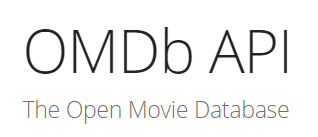The Geographic API extends the Semantic API, using a linked data approach to enhance location concepts used in The New York Times' controlled vocabulary and data resources which combine them with the GeoNames database, an authoritative and free to use database of global geographical places, names and features.
The Semantic API complements the Articles API. With the Semantic API, you get access to the long list of people, places, organizations and other locations, entities and descriptors that make up the controlled vocabulary used as metadata by The New York Times (sometimes referred to as Times Tags and used for Times Topics pages). The Semantic API uses concepts which are, by definition, terms in The New York Times controlled vocabulary. Like the way facets are used in the Articles API, concepts are a good way to uncover articles of interest in The New York Times archive, and at the same time, limit the scope and number of those articles. The Semantic API maps to external semantic data resources, in a fashion consistent with the idea of linked data. The Semantic API also provides combination and relationship information to other, similar concepts in The New York Times controlled vocabulary.
Transit API can be used to obtain time-aggregated data representing moving the people between various spatial points within the Czech Republic. Having A - 'from' and B - 'to' points, the API can return count of people traveling from A to B or people that are from A and traveling to B, etc. The mobility data is based on moving mobile stations in O2 mobile network.
Socio-demo API can be used to obtain time-aggregated data representing groups of people on the given location in the Czech Republic. Having a location, the API can return count of people belonging to age group or gender aggregated by hours. The socio-demo data is based on presence of mobile stations in O2 mobile network.
The Socrata OpenDataNetwork (ODN) REST API exposes public data, often continuosly updated and enhanced, from many thousands of public government and non profit agencies. Much of this data originating from independent sources is fused together to create new, and often powerful, entity level data. The API, in addition to search and autosuggest capabilities for finding datasets, enables data based comparisons across geographical regions such as states, counties, metropolitan areas, cities and zip codes using highly vetted data providers such as US Census, BEA, HUD and others. Comparison data is preformatted for easy and efficient display on a chart, graph or interactive map. The API also exposes data organized by narrative style questions a human might ask. The questions can be rapidly found using an autosuggest style index, and then used to directly access all data needed to thoroughly and authoritatively answer the question. Retrieved data includes time series (temporally aligned), tabular, map heavy (includes spatial boundaries), and auto generated unstructured descriptive text. The ODN API does not duplicate API endpoints or services provided by public sector agencies, but rather, returns context relevant pre-populated REST URLs, when appropriate, so the caller can access data directly from the source. The [open source](http://github.com/socrata/odn-backend) API powers [OpenDataNetwork.com](http://OpenDataNetwork.com), an [open source](http://github.com/socrata/opendatanetwork.com) site; the site highlights myriad uses and provides API badges with contextually relevant API example REST endpoints and documentation pointers. Finally, we continuously add new dat sources which appear automatically in the API, so if your favorite data source is not available, check back soon. You can also join us [HERE](http://www.opendatanetwork.com/join-open-data-network) and receive updates or let us know which data sources you are most interested in. ## App Tokens Registering for and including a [Socrata application token](https://dev.socrata.com/docs/app-tokens.html) is _required_ for the ODN API. They can be passed either using the `app_token` parameter or the `X-App-Token` HTTP header.






